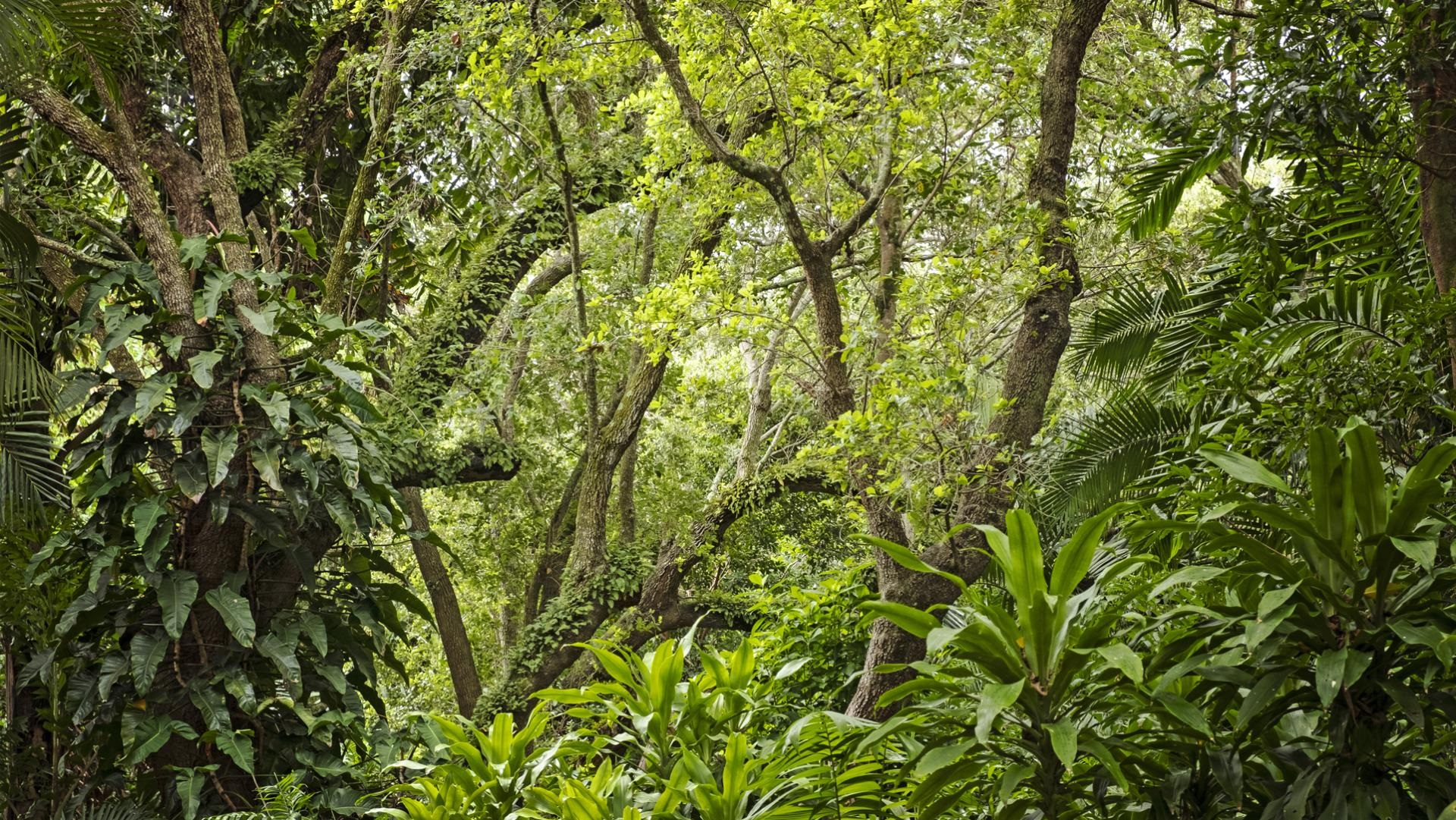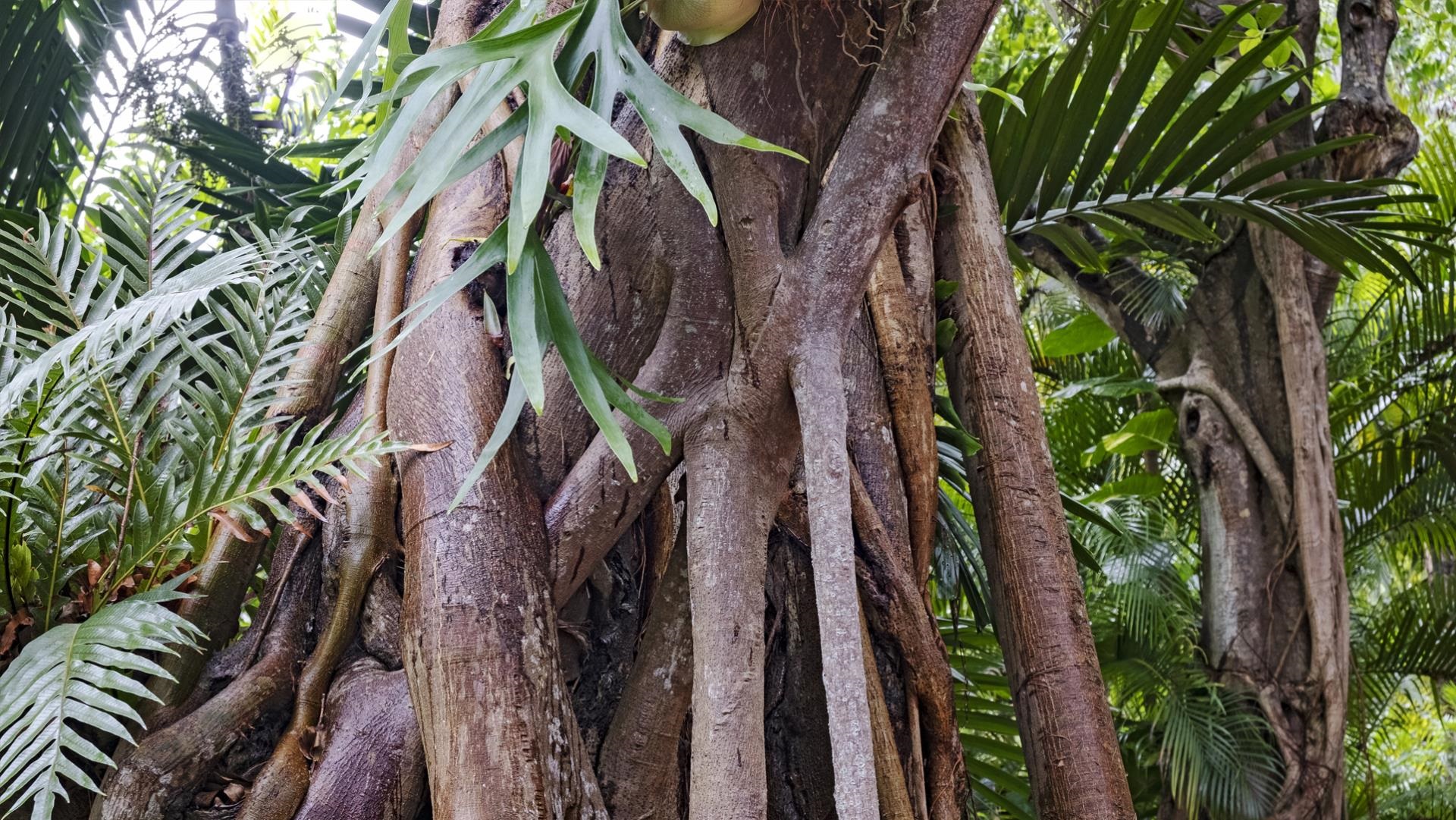Tropical Hardwood Hammock
The Tropical Hardwood Hammock is a transitional environment that separates the wet Lower Gardens from upland areas. Large Southern Live Oak (Quercus virginiana), Strangler Fig (Ficus aurea), and Gumbo-Limbo (Bursera simaruba) form an indigenous tree canopy. A great variety of exotic tropicals complete the understory, including many aroids, heliconias, and flowering shrubs. Smaller gardens and intimate spaces are component landscapes of the Hammock: the Hidden Garden, featuring a curved stone bench and circular brick platform nestled in a bold-leaved and fragrant setting, the Hammock Pavilion, containing a covered seating area, small pond, and the joyous La Danse, a work by the Brazilian sculptor Alice Pittaluga, and the Caribbean Garden, highlighting some of that region’s flora.
 |
Southern Live Oak
The signature tree of the Tropical Hardwood Hammock, this majestic species is “live” because it stays leafy green throughout the year. As a vital part of the hammock ecosystem, Live Oaks provide important year ‘round shelter and food for all sorts of creatures. Many migratory birds populate them during Fall, Winter, and Spring. Various orchids, ferns, and bromeliads flourish on their branches, including the distinctive Spanish Moss.
|
Strangler Fig
This massive tree species typically starts life as a seedling growing on the bark of another tree. Eventually the young Figs roots reach the ground. The trunk thickens, and usually, after some years, the original host tree is overwhelmed and dies. Strangler Figs often have interesting trunk and root structure, a legacy of their aerial beginnings. They are an important food source for various native butterflies and birds.
|
 |